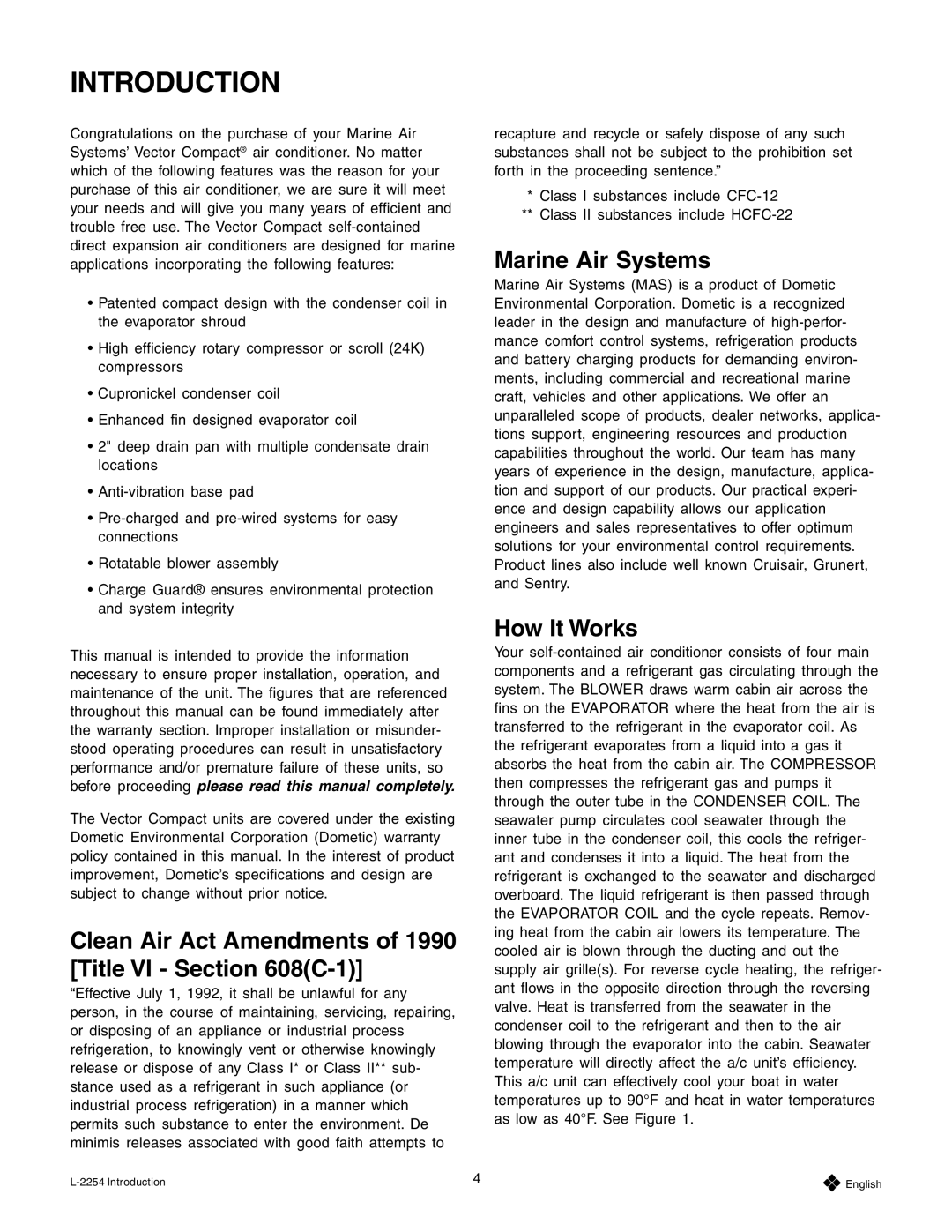INTRODUCTION
Congratulations on the purchase of your Marine Air Systems’ Vector Compact® air conditioner. No matter which of the following features was the reason for your purchase of this air conditioner, we are sure it will meet your needs and will give you many years of efficient and trouble free use. The Vector Compact
•Patented compact design with the condenser coil in the evaporator shroud
•High efficiency rotary compressor or scroll (24K) compressors
•Cupronickel condenser coil
•Enhanced fin designed evaporator coil
•2" deep drain pan with multiple condensate drain locations
•
•
•Rotatable blower assembly
•Charge Guard® ensures environmental protection and system integrity
This manual is intended to provide the information necessary to ensure proper installation, operation, and maintenance of the unit. The figures that are referenced throughout this manual can be found immediately after the warranty section. Improper installation or misunder- stood operating procedures can result in unsatisfactory performance and/or premature failure of these units, so before proceeding please read this manual completely.
The Vector Compact units are covered under the existing Dometic Environmental Corporation (Dometic) warranty policy contained in this manual. In the interest of product improvement, Dometic’s specifications and design are subject to change without prior notice.
Clean Air Act Amendments of 1990 [Title VI - Section 608(C-1)]
“Effective July 1, 1992, it shall be unlawful for any person, in the course of maintaining, servicing, repairing, or disposing of an appliance or industrial process refrigeration, to knowingly vent or otherwise knowingly release or dispose of any Class I* or Class II** sub- stance used as a refrigerant in such appliance (or industrial process refrigeration) in a manner which permits such substance to enter the environment. De minimis releases associated with good faith attempts to
recapture and recycle or safely dispose of any such substances shall not be subject to the prohibition set forth in the proceeding sentence.”
*Class I substances include
**Class II substances include
Marine Air Systems
Marine Air Systems (MAS) is a product of Dometic Environmental Corporation. Dometic is a recognized leader in the design and manufacture of
How It Works
Your
4 | ❖ English | |
|
|
